Abstract
Rib tissue segments excised from open flowers or buds of Ipomoea tricolor Cav. and floated on aqueous media responded to ethylene treatment by rolling up after 2 to 3 hours; a simple method for quantitating the rolling up is presented. The rolling up response was temperature- and oxygen-dependent and was critically affected by the pH of the medium. The ethylene concentration giving a half-maximal response was 0.1 μl/l; continuous ethylene treatment was not required for the response as a 1-hour ethylene exposure enhanced rolling up.
Rib segments rolling up during ethylene treatment unrolled when transferred to 0.5 m sucrose, indicating that rolling up was due to asymmetric turgor changes in the segments. Compartmental analysis of 36Cl− efflux from rib segments showed a fast and a slow phase; the slow phase, with a half-time of about 6 hours, is tentatively identified as efflux from the vacuolar compartment. During ethylene treatment, the rate of 36Cl− efflux in the slow phase rose markedly as the rolling up response developed. A similar result was obtained with the efflux of 86Rb+. The release of 14C-metabolites, labeled either by a period of 14CO2 fixation in darkness or by exposure to 14C-(U)-glucose, also increased during ethylene-induced rolling up.
These results suggest that ethylene causes an increase in membrane permeability in certain cells of the rib tissue.
Full text
PDF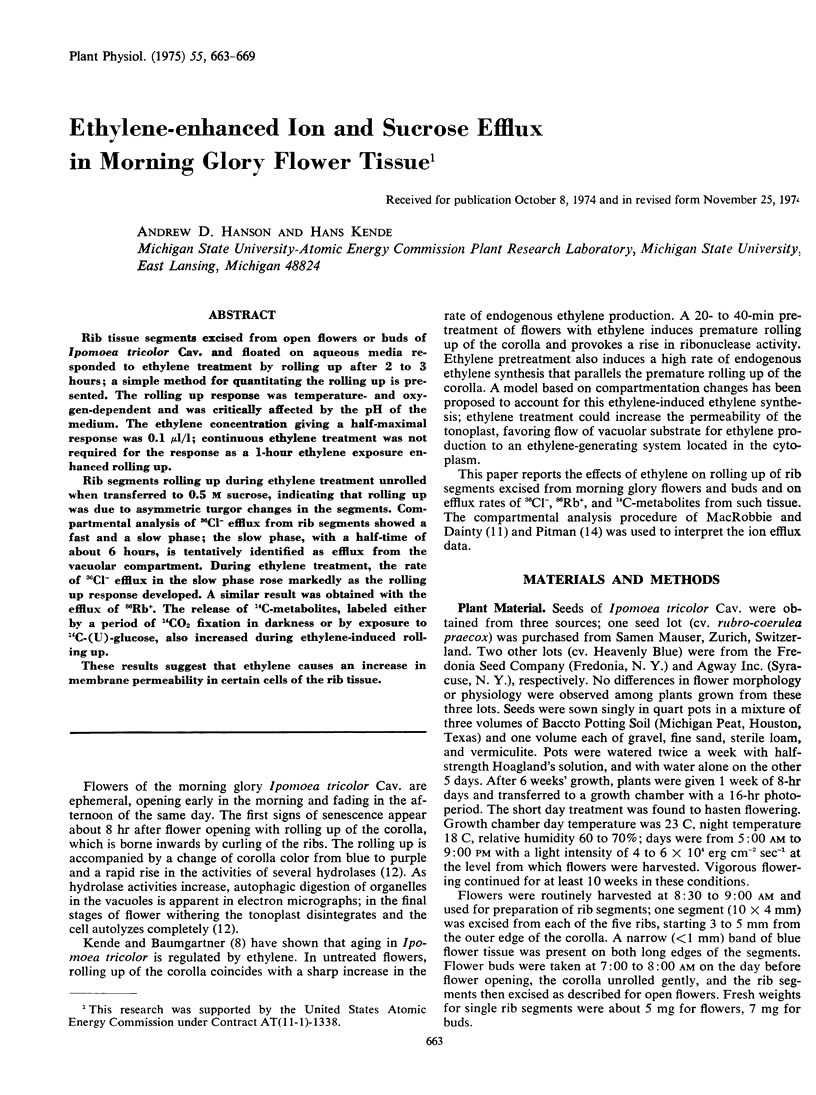
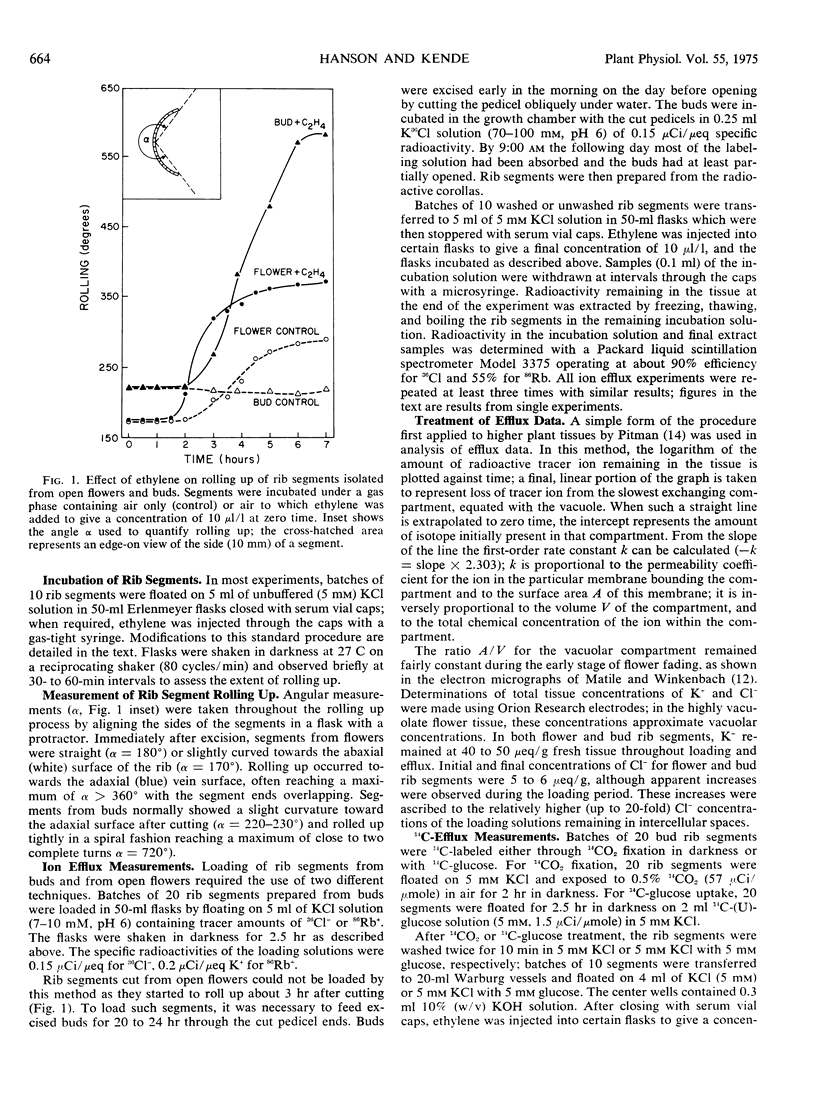
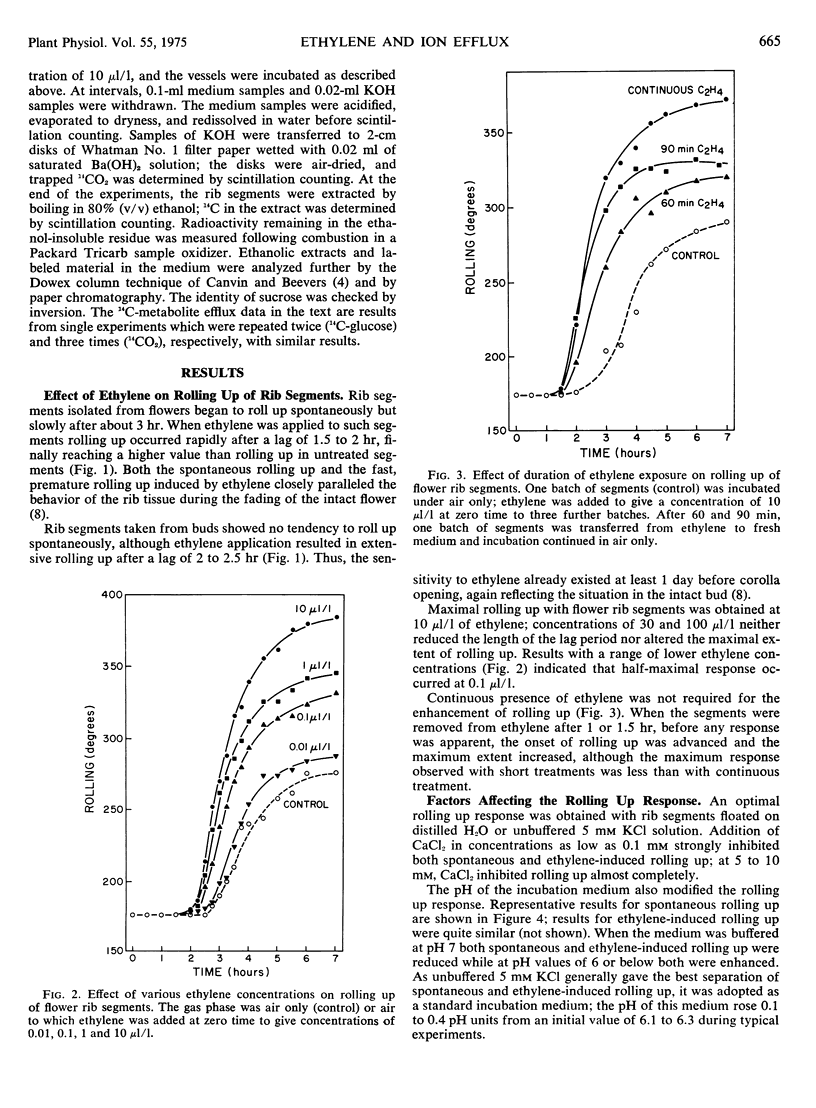
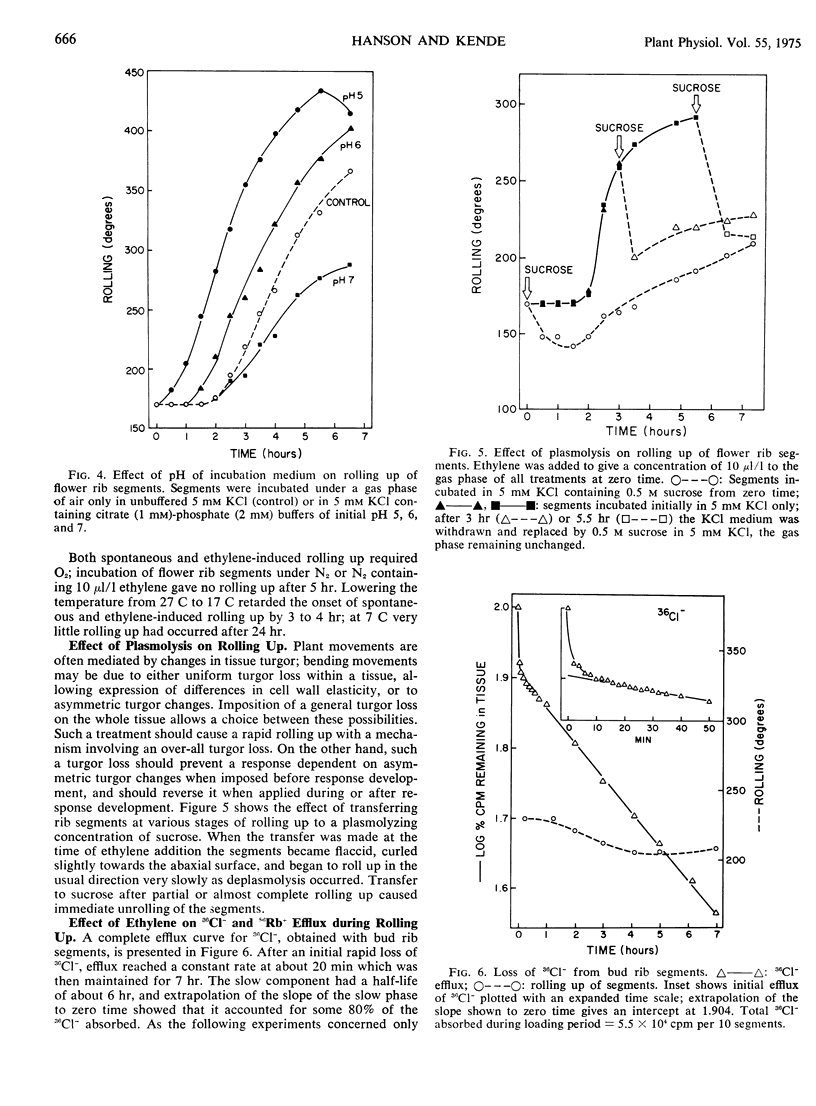
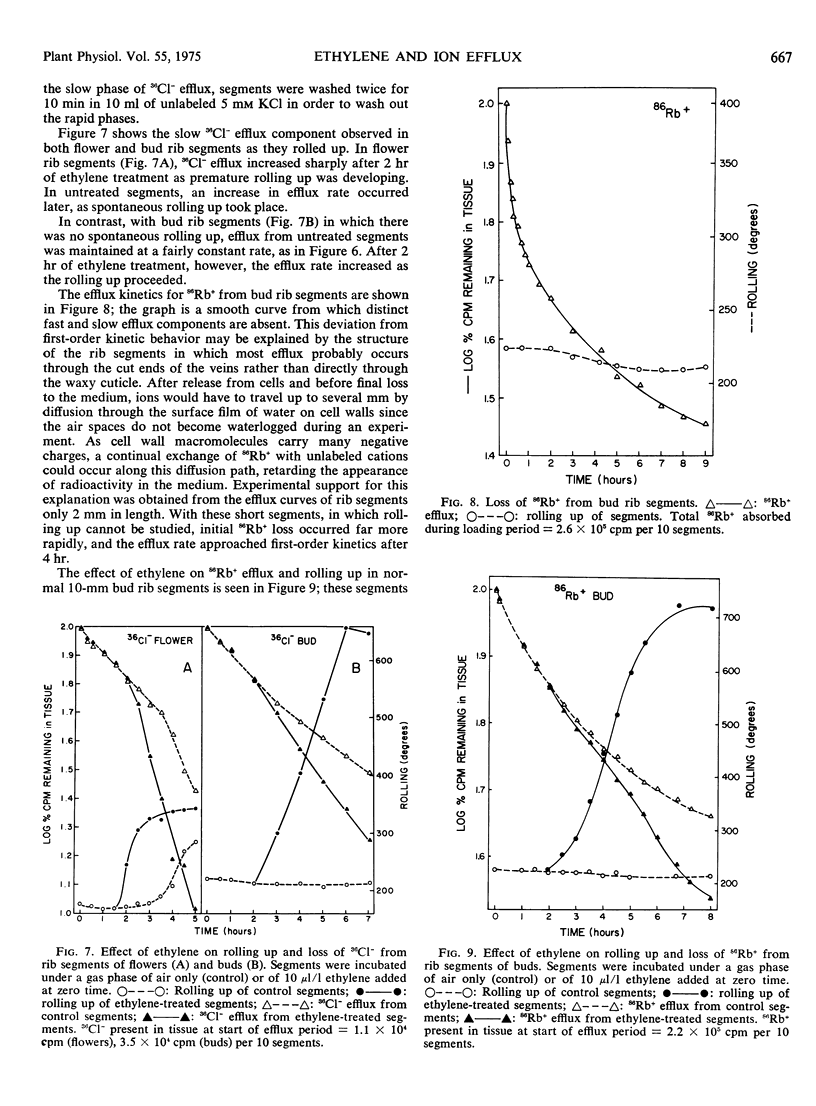

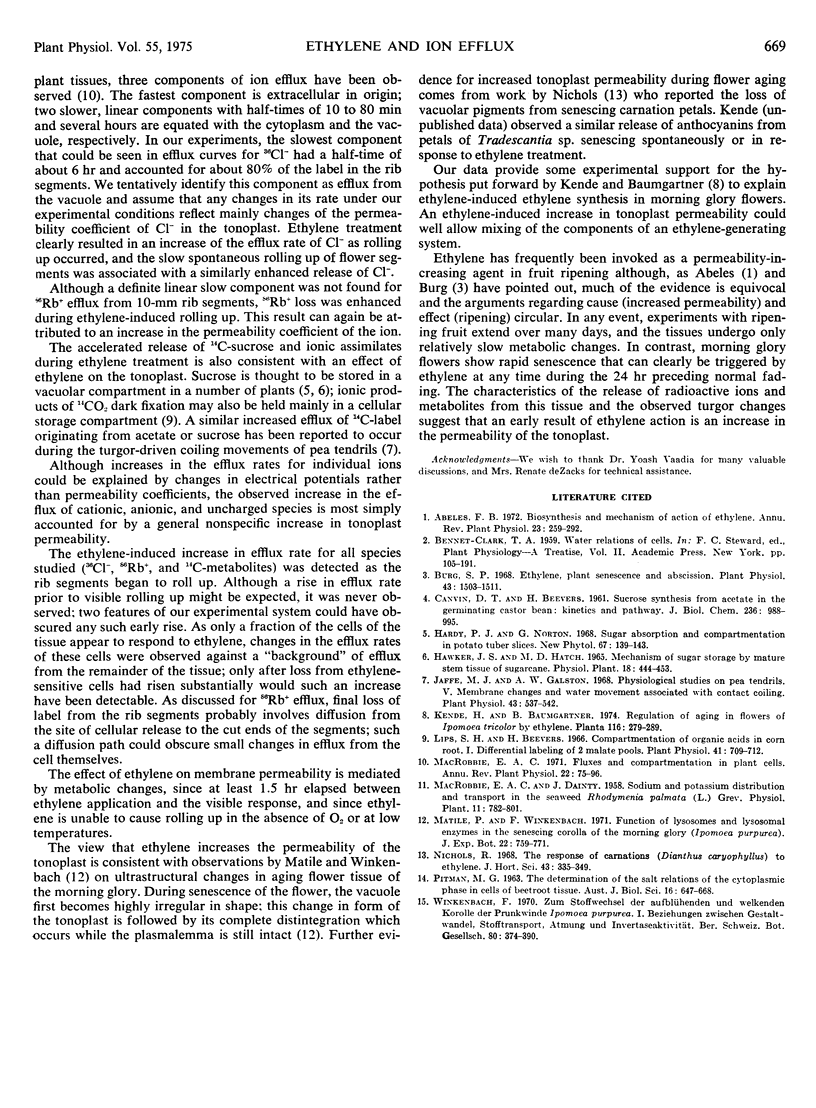
Selected References
These references are in PubMed. This may not be the complete list of references from this article.
- Burg S. P. Ethylene, plant senescence and abscission. Plant Physiol. 1968 Sep;43(9 Pt B):1503–1511. [PMC free article] [PubMed] [Google Scholar]
- CANVIN D. T., BEEVERS H. Sucrose synthesis from acetate in the germinating castor bean: kinetics and pathway. J Biol Chem. 1961 Apr;236:988–995. [PubMed] [Google Scholar]
- Jaffe M. J., Galston A. W. Physiological studies on pea tendrils. V. Membrane changes and water movement associated with contact coiling. Plant Physiol. 1968 Apr;43(4):537–542. doi: 10.1104/pp.43.4.537. [DOI] [PMC free article] [PubMed] [Google Scholar]
- Lips S. H., Beevers H. Compartmentation of organic acids in corn roots I. Differential labeling of 2 malate pools. Plant Physiol. 1966 Apr;41(4):709–712. doi: 10.1104/pp.41.4.709. [DOI] [PMC free article] [PubMed] [Google Scholar]


